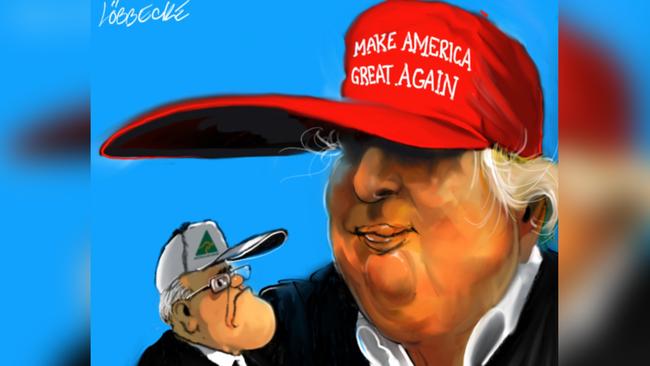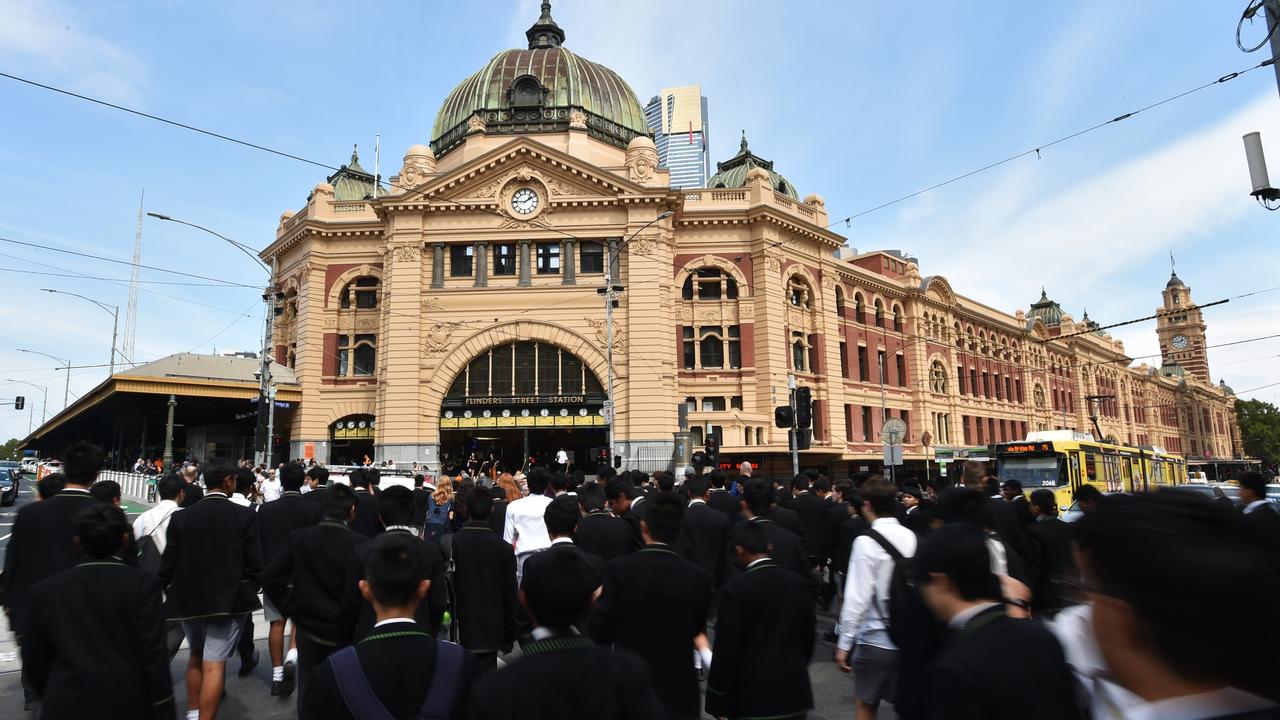World trade is squarely in the firing of the Trump revolution

The G20 Buenos Aires meeting of finance ministers this weekend will hear pleas for a cessation of trade hostilities and for universal adherence to the rules that have governed trade since the new world economy emerged from the ashes of World War II. There will be varying degrees of support for this from 19 of the 20 nations, but not from the one that matters.
As he headed off to the meeting, Scott Morrison said: “There is no reason to think this cannot be kept under reasonable management”, noting that the global tit-for-tat of the past few weeks were but the “earliest exchanges”.
But Donald Trump has been steeling for this trade fight since he took to the campaign trail in 2016.
For most of his first 12 months in office, trade appeared lower in his priorities as he pushed for tax reform and deregulation while putting North Korea’s nuclear crisis ahead of trade in his dealings with China’s Xi Jinping.
But investigations were started into the national security implications of steel and aluminium imports and into China’s treatment of US intellectual property. Preparations for a broader trade war were begun.
The endgame for the US is not simply tariff barriers to protect US industry — it is the demolition of the World Trade Organisation, the rules it administers and the dispute mechanism used to resolve conflicts over them.
This will not happen overnight but is clearly envisaged by the Trump administration. Trump’s trade advisers believe the US, as the world’s largest economy, can do better from bilateral deals done on its own terms than from the multilateral rules-based trading system that has governed world trade for 70 years.
Legislation that would torpedo the WTO has been drafted. It would exempt the US from the benchmark principles of world trade that prevent countries from unilaterally raising tariffs or imposing discriminatory tariffs on select nations. As was pointed out after the bill was leaked, it is only a draft intended to show Trump his options. A White House spokeswoman said there was no plan to implement the bill and trade analysts said it would have no chance of passage through congress.
But Trump’s trade representative, Robert Lighthizer, has had the WTO in his sights for years, arguing that its system of global trade rules entrenches unfair trade practices and has failed to cope with the rise of China.
For the moment, the US has made a play of adhering to WTO rules. Its unilateral action on steel and aluminium was justified on national security grounds, on which the WTO allows countries to make their own judgment.
Lighthizer lodged a formal dispute this week with the WTO, claiming retaliatory action by the EU and others against its steel and aluminium tariffs was illegal. But his use of the WTO dispute mechanism may be calculated to provide an excuse for a confrontation with the WTO.
The US Studies Centre’s Stephen Kirchner says the 2020 presidential election year is emerging as the key date. That is when the next five-year review of the US’s WTO membership falls due.
No one can predict the composition of congress after the midterm elections in November but the easy assent of previous reviews is no longer assured. It is possible that in an election year, withdrawal from the WTO could draw support from both Republican and Democrat representatives.
The International Monetary Fund warned this week that the US would be the biggest loser from a trade war against the rest of the world. It would find retaliatory tariffs being imposed on a large share of its exports. Other nations would face tariffs on their exports to the US but could divert some of these sales to other trading partners.
Nobel prize-winning economist Paul Krugman says large economies can make temporary gains by lifting tariffs about 40 per cent, about where they’ve settled in previous trade wars. He says this would result in a 70 per cent fall in world trade.
The effect on global output would be less than might be expected — a loss of 2 per cent to 3 per cent of gross domestic product — before including the cost of the economic dislocation, which could be much larger. Unlike the 1930s, manufacturing now is organised in supply chains traversing many countries, making adjustment to tariffs more difficult.
As a supplier of commodities, Australia is at the beginning of the supply chain and is a price-taker with no influence.
It has been, as the Treasurer points out, a great beneficiary of the trade liberalisation of the past three decades. The unilateral tariff cuts of the Hawke and Keating governments paved the way for the sustained growth we have achieved since the early 1990s.
Australia has done well to cement links with its most important trading partners in the region but it is poorly placed to prosper in a world where trading right is determined by economic might.



To join the conversation, please log in. Don't have an account? Register
Join the conversation, you are commenting as Logout